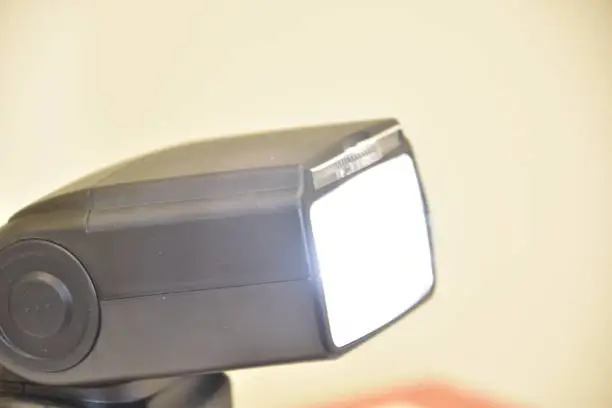If you’re diving into photography with the Minolta XGA, you might find that mastering the use of flash can elevate your images significantly. Whether you’re capturing portraits, landscapes, or any other subject, using flash effectively can make a world of difference. Flash can help illuminate your subjects, reduce harsh shadows, and enhance colors, allowing you to take stunning photographs in various lighting conditions. Here’s how to get the best results using flash in your Minolta XGA.
Understanding Your Flash Options
The first step in achieving great results with flash is understanding the options available on your Minolta XGA. This camera model is equipped with a built-in flash, and you also have the option to use external flash units. The built-in flash is convenient for casual photography, but an external flash can provide more power, flexibility, and creative control. Familiarize yourself with the specifications of both options to determine which suits your needs best.
When using the built-in flash, be mindful of its limitations. While it can provide a quick burst of light, it often creates harsh lighting conditions and can lead to red-eye in your subjects. External flashes, on the other hand, can be adjusted in terms of intensity and direction, allowing you to create softer and more flattering light.
Learning Flash Settings
Next, take the time to learn the flash settings on your Minolta XGA. Your camera allows for various flash modes, including auto, manual, and slow sync. Each mode serves a different purpose:
Auto Mode: In this setting, the camera automatically determines when to use the flash based on the available light. This is great for beginners and can yield decent results in most situations.
Manual Mode: This setting gives you full control over the flash output. You can adjust the power of the flash based on your subject’s distance and the ambient light. This mode is excellent for more experienced photographers looking to achieve specific effects.
Slow Sync Mode: This option is useful for low-light environments. It combines a slower shutter speed with a flash burst, allowing more ambient light to enter the shot. This technique is perfect for capturing the background while properly illuminating your subject.
Experimenting with Flash Techniques
Once you have a grasp of the settings, it’s time to experiment with different flash techniques. Here are some effective techniques to try:
Bounce Flash: Instead of pointing the flash directly at your subject, aim it at a nearby wall or ceiling. This technique allows the light to bounce off the surface, creating a softer and more diffused illumination. It’s particularly useful in indoor settings and can produce a more natural look.
Diffusing the Flash: You can soften the flash’s harsh light by using a diffuser. Many photographers use materials like white umbrellas or commercial diffusers that attach to the flash. This helps to spread the light and reduce harsh shadows, resulting in a more flattering exposure.
Fill Flash: This technique involves using the flash in bright daylight to fill in shadows on your subject. For example, if you’re photographing a person outdoors, the sun might cast harsh shadows on their face. Using fill flash in this scenario helps brighten the shadows without overexposing the background.
Using Flash with Long Exposure: If you want to capture motion while still using flash, try using a slow shutter speed. This allows ambient light to show movement in the background while the flash freezes your subject in place. It’s a fantastic technique for dynamic scenes, such as capturing a dancer in action.
Choosing the Right Flash Position
The position of your flash can greatly affect the outcome of your photos. If you’re using an external flash, experiment with various angles and distances. For example, placing the flash above your subject can create a more natural shadow effect, while positioning it to the side can add dimension and drama to your shots.
If you’re limited to the built-in flash, you can still achieve some interesting results. Try holding your camera at different angles or tilting the flash slightly to alter the direction of the light. Small adjustments can lead to significant changes in how your subject is illuminated.
Mastering Exposure Settings
When using flash, understanding exposure settings is crucial. Your Minolta XGA allows you to control ISO, aperture, and shutter speed, and these settings can significantly influence your flash photography.
ISO: Keep your ISO low to avoid grainy images, but don’t be afraid to increase it slightly if you’re shooting in low light and need a faster shutter speed.
Aperture: A wider aperture (lower f-stop number) lets in more light, making it easier to balance flash with ambient light. However, if you want more depth of field, you may need to adjust your flash output accordingly.
Shutter Speed: Ensure that your shutter speed is within the sync speed of your flash to avoid dark bands in your images. Experimenting with different shutter speeds can help you find the perfect balance between ambient light and flash illumination.
Practicing and Learning
As with any skill, practice is key to mastering flash photography with your Minolta XGA. Take time to shoot in various environments, experimenting with different techniques and settings. Review your photos critically to identify what works and what doesn’t.
You can also learn from other photographers. Consider joining photography groups, attending workshops, or following online tutorials that focus on flash techniques. Engaging with a community of fellow photographers can provide valuable insights and inspire you to try new things.
Conclusion
Using flash with the Minolta XGA can elevate your photography and open up a world of creative possibilities. By understanding your flash options, mastering settings, experimenting with techniques, and practicing regularly, you can achieve stunning results. Remember that photography is an art form, and learning how to use flash effectively will enhance your ability to tell stories through your images. So grab your camera, get out there, and start capturing those beautiful moments with the perfect flash!











